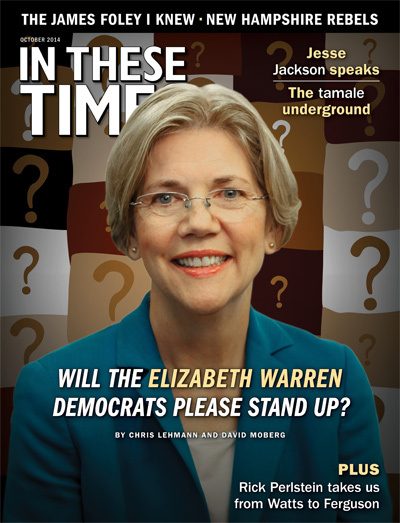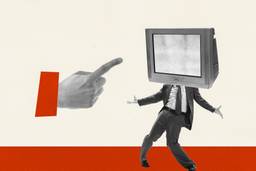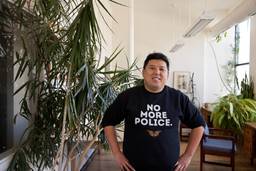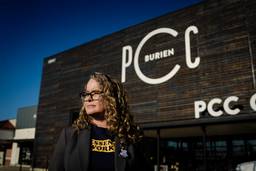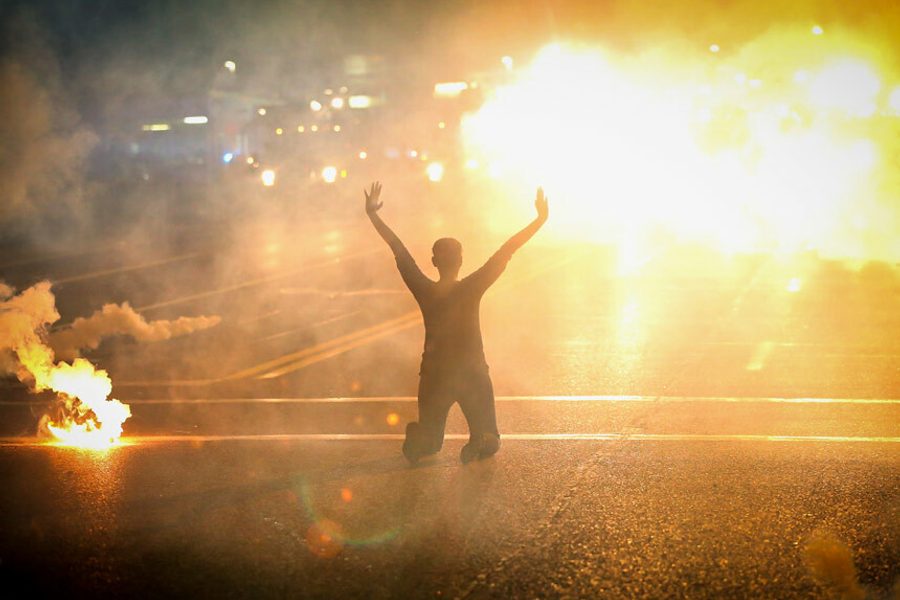
It usually started with the police.
In July of 1964, barely hours after the close of the Republican National Convention that nominated Barry Goldwater, 15-year-old James “Little Jimmy” Powell was shot to death by an off-duty cop in an apartment building vestibule on East 76th Street in New York. Just as in the shooting of 25-year-old Kajieme Powell this past August 19 in St. Louis, the officer claimed that the victim had charged him with a knife, though eyewitnesses denied that. A bystander cried, “Come on, shoot another nigger!” Within hours, Harlem was ablaze.
That was the first in the wave of apocalyptic racial riots that swept American cities in the 1960s. Later that week, in Rochester, New York, the fires started after cops roughed up the very woman who’d called them in to break up a rowdy, drunken party. The next summer, in Watts, Los Angeles, the most famous of the 1960s riots kicked off after police hit people with batons at the scene of a drunk-driving arrest. In 1966, in Chicago, it began when cops turned off a fire hydrant in which kids were frolicking on the third straight day of 90-degree heat. In 1967, the most tumultuous year, the first riot came after cops in Newark beat a cabdriver because they thought he was a Black Muslim.
The parallels with this summer’s uprising in Ferguson, Missouri, following the shooting of Michael Brown, an unarmed 18-year-old, are undeniable.
In the 1960s, neighborhoods or cities that were overwhelmingly black were patrolled by police forces that were overwhelmingly white. The same is true in Ferguson today, where the force has an atrocious history of racial profiling: According to annual reporting from the office of the Missouri Attorney General, in a city that is about 30 percent white, 92.7 percent of those that police arrested in 2013 were black. Michael Brown’s shooter, Darren Wilson, learned his policing on a force in nearby Jennings, Missouri, that was so corrupt and racist (a cop once kicked a woman in the stomach when she told him she couldn’t move her van because it didn’t run) it had to be shut down. Blatant racism, too, was a pattern in forces where police abuses set off riots in the 1960s. Los Angeles cops were led by William H. Parker, who coined the phrase “thin blue line” — as in, the cops were a thin blue line between chaos and civilization. Parker liked to recruit white officers from the Mississippi Delta. Parker explained the origin of the Watts riots to an investigating commission: “One person threw a rock and then, like monkeys in a zoo, others started throwing rocks.” His patrolmen, meanwhile, would begin tours of the ghetto with a ritual cry taken from a cigarette commercial, “LSMFT” — “Lucky Strike Means Fine Tobacco.” Only, for them, the letters stood for “Let’s Shoot a Motherfucker Tonight.”
In Chicago, a Ku Klux Klan cell operated inside the force, stockpiling its very own arsenal (which included hand grenades). The San Francisco precinct responsible for patrolling Hunters Point, a black neighborhood that rioted in 1966 after cops shot a black 17-year-old, displayed a photo of a KKK imperial wizard on its bulletin board.
In cities like Cleveland, when it came to black neighborhoods, police simply refused to police; though when blacks dared enter white space, they were policed with an Old Testament vengeance — like the time a bus-station porter was beaten on and off in jail for four days, and made to bark like a dog, for the crime of sitting on the floor of the bus station after a tiring shift. The U.S. Commission on Civil Rights convened hearings on the situation after Cleveland suffered one of the worst riots in 1966, which began one hot night outside a tavern where the white owner posted a sign reading “NO WATER FOR NIGGERS,” and bar employees patrolled its perimeter with shotguns. What did they find? Cops collaborating with pimps; “it has got to the place whereby a man’s wife or daughter is not safe to walk the streets,” an African-American minister testified. The police chief said he was for capital punishment “to keep the Negroes in line.”
In Ferguson, police racism is built in, institutionalized in the town’s business model of using revenue from fines to pay its bills (and in the process, turning some residents into unemployable criminals). The encounter with Ferguson’s fierce justice system, if you are black, works like this: You have an overwhelming chance of being cited or arrested by police, for doing little or nothing that is wrong. A report from the legal group ArchCity Defenders found that in 2013, “the Ferguson Municipal Court disposed 24,532 warrants and 12,018 cases, or about three warrants and 1.5 cases per household,” an incredibly high rate. Then you are likely to face a fine you cannot afford to pay — ArchCity Defenders calculates that the average fine is $275 — or a summons to a court that is rigged against you showing up on time. “The bench routinely starts hearing cases 30 minutes before the appointed time and then locks the doors to the building as early as five minutes after the official hour, a practice that could easily lead a defendant arriving even slightly late to receive an additional charge for failure to appear,” reads the report. Thus, you might end up in jail — with a criminal record that frequently bars employment.
That Kafkaesque sense of futility explains some of the frustration that boiled over in Ferguson with the shooting of Michael Brown. But that’s only one half of it. The other part is political.
Ferguson’s six-person city council has only one black member. It’s been much discussed that the dearth of African-American political representation has been helped along by what has been described as the apathy of black voters there, only 1.78 percent of whom turned out from one of the city’s black townships in a recent municipal election. But reporters on the ground in Ferguson — and possibly the Justice Department — should be looking at whether the powers that be have been practicing the sort of dark arts of malapportionment that disenfranchised other municipalities with sizable black populations in the past. Boston, for example, was able to defy a 1963 state law demanding school integration for nearly a decade by electing its school board “at large,” instead of by district. And prior to its 1967 riot, Newark’s Mayor Hugh Addonizio practiced a form of “urban renewal” that had a political twist: By building high-rises downtown, he was able to break up geographic concentrations of blacks, to ensure they would have no political power base.
Black Fergusonians have shown that they will vote when they have something to vote for and know that their vote will count. Seventy-six percent of them turned out in November 2012, when Missouri was a key swing state for Barack Obama’s reelection. When it comes to local elections, they might just be making the rational decision that a hike to the polls is a waste of time. Even that one black council member, Dwayne James, has baffled observers by remaining mum in the face of the single issue now galvanizing his constituency, Michael Brown’s killing. He’s said only, “Our city charter provides that our mayor is the spokesperson for the city.” I don’t want to be unfair to James — I don’t know his motives — but such quiescence recalls the behavior of Chicago’s “Silent Six”: the six African-American alderman, during the 1960s heyday of the Cook County Democratic Organization, who were so in thrall to Mayor Richard J. Daley that they didn’t even support a proposed anti-housing discrimination ordinance. (In response, wags dubbed the one alderman who forcefully advocated anti-discrimation, Leon Despres — who was white — the city’s “only black alderman.”)
Then as now, the national political context matters. Mainstream white liberal politicians of the 1960s, flummoxed that blacks would be rising up at the very moment when so much was “being done for them” (of course, the 1964 Civil Rights Act and the 1965 Voting Rights Act only affected the South) began making strikingly radical connections. Sen. Robert F. Kennedy said, “There is no point in telling Negroes to obey the law. To many Negroes, the law is the enemy.” Vice President Hubert Humphrey predicted that unless slum conditions improved, and quick, there would be “open violence in every major city and county in America.” He added a note of empathy, saying that if he lived in one of those slums, “I think you’d have more trouble than you have had already, because I’ve got enough spark left in me to lead a mighty good revolt.”
Conservatives didn’t want to hear it — and pivoted off such pronouncements to fuel a backlash. Rep. Howard Smith of Virginia replied to Humphrey, “The vice president will bear a grave responsibility in blood and lives if he tries to provoke minority group members to riot for rent supplements.” During a 1966 debate over an open housing bill, Sen. Sam Ervin of North Carolina said, “The record shows that the more laws that are passed in the nation on the national, state and local levels, the more rioting and looting we have.”
That soon became the conservative, and even the centrist, consensus: Laws to ameliorate misery, not the misery itself, were the problem. The bill failed — the first civil rights package not to become law in three years. Then, in 1967, a new Congress filled with freshly elected right-wingers, borne aloft on the backlash against civil rights, debated a modest federal outlay for rodent control in the slums. It was derided as the “civil rats” bill. The debate became an occasion for mockery: grown men guffawing about “rat patronage,” “rat bureaucracies” and a “high commissioner of rats.” Rep. Martha Griffiths, a Michigan Democrat, tried to shut them up: “If you’re going to spend $79 billion to kill off a few Vietcong, I’d spend $40 million to kill off the most devastating enemy that man has ever had.”
Her argument failed. The bill was slapped down. The next year, 1968, following the assassination of Martin Luther King, Jr., saw the deadliest riots of all. In light of all that, an answer to the mystery is clear: Why would people, no matter how angry, burn down what are, after all, their own neighborhoods? Because they feel so dispossessed that their neighborhoods don’t seem like their own at all.
The fire this time
But history is the study of change as well as of continuity. And there are striking differences between the disturbances in Ferguson and those in Los Angeles, Chicago, Newark, Detroit, and all the rest more than 45 years ago. For one, what we saw in Ferguson was much less bloody. Violence and property damage were more rumor than reality. An early photo of what looked like someone throwing a Molotov cocktail turned out to be of a man throwing a steaming tear gas canister back at the police. Despite the rhetoric of the Right — New York Post columnist Linda Chavez called Attorney General Eric Holder “Eric the Arsonist” for daring to observe that as a black man, he understood black Fergusonians’ mistrust of police — the one building that fell to arson was a QuikTrip store. Compare this to Watts in 1965, which created a third of a billion dollars in property damage, or the Chicago riot in 1968, which left two straight miles of Madison Street in ruins.
One difference between then and now, for good or ill: The 1960s had a set of black self-appointed leaders who made a political virtue of arson and looting. In 1967, Student Non-Violent Coordinating Committee Chair H. Rap Brown visited the racially tense city of Cambridge, Maryland, stood on a street corner, and cried, “Detroit exploded, Newark exploded, Harlem exploded! It’s time for Cambridge to explode!” He pointed to a dilapidated school down the street: “You should have burned that school a long time ago!” So, promptly, his listeners did.
Stokely Carmichael became a virtual riot circuit rider, tooling through Atlanta telling milling throngs it was time to “tear this city up” (they did), and announcing, “In Cleveland, they’re building stores with no windows. I don’t know what they think they’ll accomplish. It just means we have to move from Molotov cocktails to dynamite.”
A then-militant named Julius Lester— now a rabbi and children’s book author — praised the work of a sniper in a city 13 miles down I-70 from Ferguson for cutting down what Lester termed “known enemies of the black community.” This, he said, was a “move from self-defense to aggressive action,” just like what the Vietcong were doing. Posing as a wartime guerrilla strategist, he wrote, “What is happening in East St. Louis points up once again the advantage of medium-sized cities, leaving Saigon, Danang and other large cities for the last.” Despite the perfervid pornoviolent fantasies of Tea Partiers, no one’s saying anything like that now.
Another difference: Despite the awful, inexcusable responses of law enforcement now, what is happening is the palest shadow of the response of law enforcement then.
Take Newark. After the first wave of looting and arson, the state police were sent in. Alongside the local police, they commenced, as documented by a brave investigative reporter named Ron Porambo in a 1971 book called No Cause for Indictment, a veritable turkey shoot. First they shot and killed a 45-year-old mother searching for one of her children; then a 28-year-old former basketball star who was shot shortly after advising his companions to submit quietly to police; then a young man shot in the back while running from a liquor store. Nine were killed by the end of the first day. That went on and on for six days, including one group cut down by police who fired into the milling crowd even as the men began waving their undershirts like white flags.
The death toll from these acts of official terror in Newark was 25. Newark’s white residents, meanwhile, set up armed patrols at the perimeters of their neighborhoods, promising to shoot anyone who might “spill over onto white ground.” No one was ever indicted in these deaths; hence the title of Porambo’s numbing, classic book. (Two attempts on Porambo’s life followed its publication.) A similar massacre by police, National Guardsmen and white vigilantes unfolded in Detroit a week and a half later, precipitated when police raided an afterhours bar that was operating illegally. The official death toll was 43. Then, such white terrorists were protected by their anonymity. Perhaps it is because these protections are all but impossible in the era of cell phone cameras and social media that no one else has died in Ferguson. The whole world is watching, in a way that was impossible then, and the media is less able to filter events. In 1967, CBS executives decided not to run a wrenching dispatch from the funeral of a beloved 72-year-old victim in Newark, Isaac “Uncle Daddy” Harrison, fearing a sympathetic portrait of “rioters” would be far too controversial. Now, such a funeral would be a YouTube sensation and Uncle Daddy a household name. Similarly, far too many eyes are on the street for even a tepid ur-establishmentarian Democrat like Gov. Jay Nixon of Missouri to get away with a pro-police affirmation like the one offered by New Jersey’s Democratic Gov. Richard Hughes, a close ally of President Lyndon Johnson, after Newark: “I felt a thrill of pride in the way our state police and National Guard have conducted themselves.”
From riots to mobilization
By 1969, the urban riots all but stopped. With a handful of notable exceptions over the years Miami’s Liberty City in 1980, Los Angeles after the Rodney King verdict in 1992, Cincinnati in 2001 — police violence no longer automatically sparks flare-ups. In recent years, there have been many, many police shootings of innocents: Think of Amadou Diallo in New York in 1999, or Oscar Grant in Oakland in 2009, whose shooting by BART transit cops inspired the movie Fruitvale Station. None inspired the level of uprising of the 1960s, or that we saw in Ferguson this year. So what explains the hiatus — and what made Ferguson et al the exceptions?
It certainly isn’t that slums stopped being miserable places. In 1967, a presidential commission led by Illinois Gov. Otto Kerner investigated the roots of riots. In the words of the Kerner Commission Report’s famous preface, America would have to stop being “two societies, one black, one white — separate and unequal.” That didn’t happen. Slums stayed, and grew worse, but they also stopped burning.
In his 2011 book, Why Don’t American Cities Burn, the historian Michael Katz offers one explanation: The riots in the 1960s came in a context of cities undergoing radical transitions in political geography as they absorbed African Americans who migrated north for (often nonexistent) jobs after World War II. Disorganized, disenfranchised African-American communities were crowded into slums, with miserable results. Riots were signs of the strain of “transitioning” cities. But by the 1970s, when rioting all but stopped, white flight was so advanced that cities like Detroit were almost entirely black, and most neighborhoods were either all black or all white, without the attendant turf battles that frequently drove riots as well. The cities and neighborhoods that proved the exception between then and now more resemble that 1960s pattern: Liberty City was unsettled by ethnic rivalries between blacks and Cubans, and blacks in Los Angeles felt economically displaced by Korean immigrants. So, in fact, does Ferguson, which over the last 25 years has shifted from three-quarters white to predominantly black. In that sense it looks a lot like Newark or Detroit in 1967.
Garry Wills’ 1968 book The Second Civil War: Arming for Armageddon offers another piece of the puzzle. One of its chapters profiled a policing expert who schooled Wills incisively on police tactics: how to cordon off disturbances where they begin and contain their spread; how to de-escalate violence with less-than-lethal technology and tactics; how white politicians and police officials could build trust on the street. And indeed, as the experience of New York City seemed to have shown, trust worked. In 1965, the year after that first riot in Harlem, John Lindsay was elected mayor. Facing a simmering neighborhood disturbance in a “transitioning” Brooklyn neighborhood, his police commissioner ordered cops to “keep their billies on their belts and their guns in their holsters.” Lindsay himself, famously — it made it onto an episode of Mad Men — walked the streets of Harlem himself after King’s assassination, calming nerves, assuring residents of official concern.
Police forces, for a time, seemed generally to be becoming more professionalized, less corrupt. In 1970, Lindsay, inspired by the publicity surrounding Frank Serpico’s brave witness, empaneled the Knapp Commission, which thoroughly reorganized New York’s rotten police. Elsewhere, cities acted on another of the Kerner Commission’s less dramatic recommendations: Hire police forces that looked more like the cities they patrolled. The influence of Stokely Carmichael, ironically, helped. Genuine black power came to cities like Gary, Indiana, Cleveland and Detroit, which elected their first black mayors. Affirmative action in the work- place helped create at least some sense of African-American buy-in with the power structure. The impetus for diversity came almost entirely, as the political scientist John David Skrentny demonstrated in his classic 1996 book, The Ironies of Affirmative Action, from corporate executives who sought “To Prevent a Chain of Super-Watts” — the title of a 1968 article in the Harvard Business Review, which read: “If the businessman does not accept his rightful role as leader in the push for the goals of the ‘Great Society,’ we will be increasingly smothered by a growing welfare state ridden with riots and arson and spreading slums largely unchecked by the proliferating programs for the unemployed poor.”
That means that some of the things that stopped riots then are the kind of things that are being systematically un- done now. (And the cities where riots have taken place in the interim — Miami, Los Angeles, Cincinnati — are the places where either police forces or city governments reformed the least.) What “businessman” now worries about his role in creating a great society? What cop, in our militarized, knock-kneed post-9/11 society, wants to keep his billy on his belt and his gun in his holster? (Think of all those terrifying images of the shock troops in Ferguson, instinctually drawing their military- grade rifles in their Robocop gear on women holding babes in arms.) Then there is the fact that cops, marinated in the same reactionary political culture as the rest of the country, watch Fox News, too. That San Francisco precinct house that sacralized a KKK imperial wizard in 1966? Think, today, of Officer Dan Page of St. Louis, who became famous for shoving a CNN reporter on live broadcast from Ferguson, and was later revealed to have recorded a speech in which he ranted about “rag heads” and the “four sodomites on the Supreme Court.”
And of course, in all our cities, the poor blacks left behind by white flight are terrorized by our increasingly horrifying modern police state, with its full complement of surveillance, incarceration, and all the nihilistic violence that ensues. “It’s good that we don’t have mass civil violence,” Michael Katz concluded, in an interview with The Atlantic’s CityLab website. “But the question is: Why don’t we have more political mobilization?” Blame the hopeless nihilism. Blame politics.
Sociologists in the 1960s, reaching for an explanation of why cities were burning, often spoke of the problem of “rising expectations.” It wasn’t that the times were especially miserable for blacks, or even that the neighborhoods that rioted were the most uninhabitable ones. Watts was a neighborhood of neat bungalows and well-tended lawns. Detroit was one of the biggest beneficiaries of Great Society largesse. But, in a time of dynamic change and an expanding sense of social possibility, the frustrations that were all too palpable — police forces that acted like occupying armies and municipal governments that wouldn’t give them the time of day — became all the more the focus of rage, precisely because they felt so cruelly vestigial. Rioting, paradoxically, was at least partially an act of faith: At least we can do something to get their attention. Or, as Martin Luther King, Jr. famously put it, “A riot is the language of the unheard.”
So in that sense, Ferguson feels like a sort of welcome blast from that past: a place where hopes whetted by a black president who seemed to promise so much more than what he could deliver were dashed; where lingering racial boundaries in an “integrated” city are still the site of everyday contestation; and where, because of all that, the everyday humiliations of dispossession and disenfranchisement burn, and burn, and burn. At least Black Ferguson has expectations. Maybe the rest of us should take some solace from that. Let the political mobilization begin.
Rick Perlstein, an In These Times board member, is the author of Reaganland: America’s Right Turn, 1976-1980 (2020), The Invisible Bridge: The Fall of Nixon and the Rise of Reagan (2014), Nixonland: The Rise of a President and the Fracturing of America (2008), a New York Times bestseller picked as one of the best nonfiction books of the year by over a dozen publications, and Before the Storm: Barry Goldwater and the Unmaking of the American Consensus, winner of the 2001 Los Angeles Times Book Award for history. Currently, he is working on a book to be subtitled How America Got This Way.
